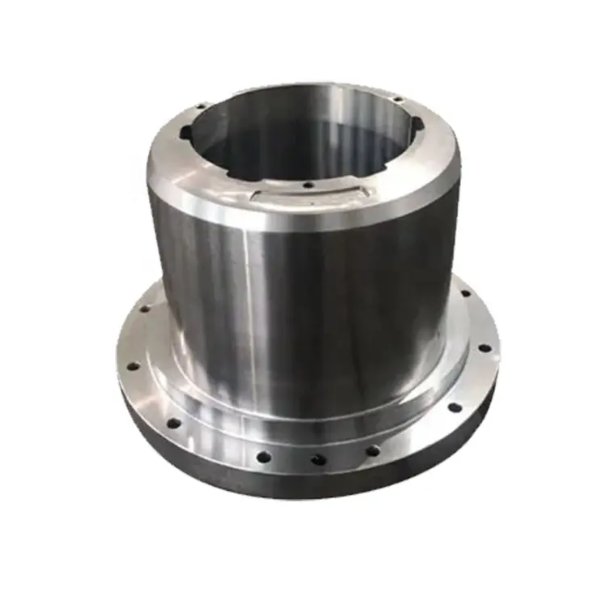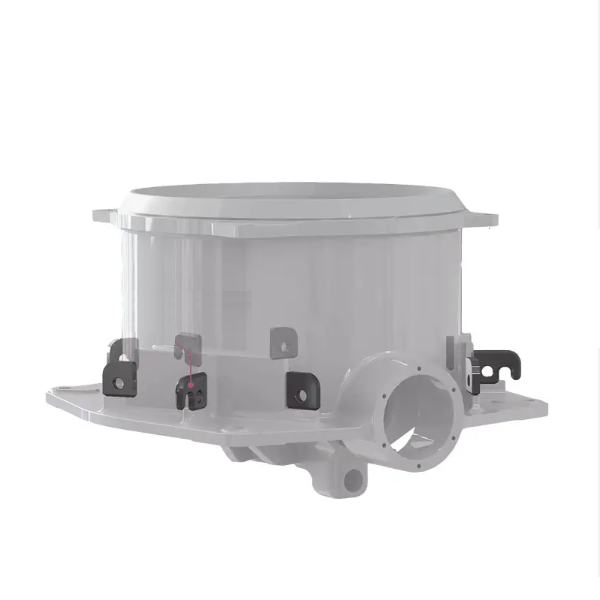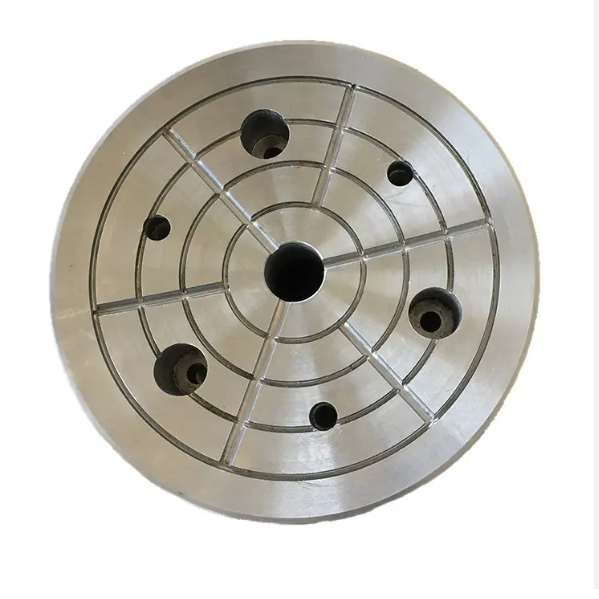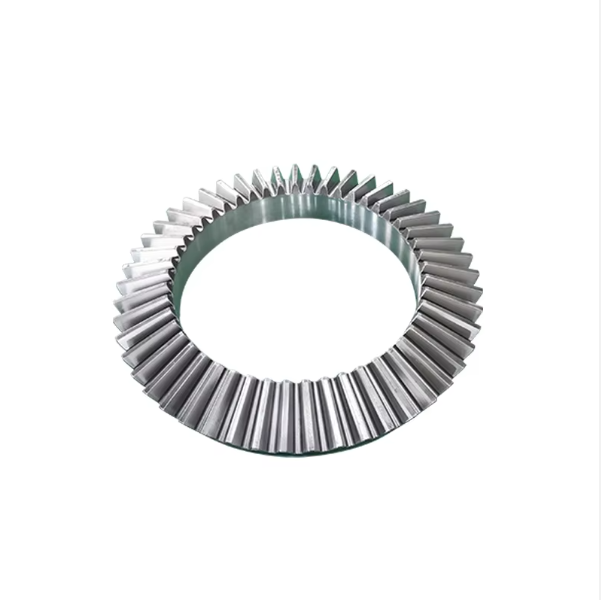Cone crusher is a kind of crushing equipment widely used in metallurgy, construction, road construction, chemical and silicate industries. The following is a detailed introduction to the relevant technologies of cone crusher:
There are various types of cone crushers, including single-cylinder cone crusher, multi-cylinder cone crusher, full hydraulic cone crusher, compound cone crusher, etc.
The feed size of single-cylinder cone crusher can reach 560mm, and the production capacity is 45-2130 tons/hour. The feed size of multi-cylinder cone crusher can reach 350mm, and the production capacity is 45-1200 tons/hour.
The working principle of cone crusher is that the rotation of the motor passes through the pulley or coupling, the cone crusher drive shaft and the cone part of the cone crusher to make a swing motion around a fixed point under the force of the eccentric sleeve, so that the crushing wall of the crushing cone is sometimes close to and sometimes away from the surface of the mortar wall fixed on the adjustment sleeve, so that the ore is constantly impacted, squeezed and bent in the crushing chamber to achieve ore crushing.
There are many precautions when operating the cone crusher. For example, it is forbidden to adjust the discharge port when the adjustment ring jumps; it is forbidden to operate the cone crusher when the locking nut of the adjustment seat is not locked; it is forbidden to adjust the discharge port with material; it is forbidden to operate the cone crusher when the oil level of the lubrication station is low; it is forbidden to operate the cone crusher when the lubricating oil temperature is lower than 25℃; it is forbidden to operate the cone crusher when the lubricating oil return temperature is higher than 55℃, but the oil pump must keep running; it is forbidden to operate the cone crusher when the lubricating oil filter is blocked; it is forbidden to operate the cone crusher when the alarm light on the lubrication station is on.
The center feeding must be continuous and uniform, and full feeding can improve work efficiency. Each shift should check whether there are copper and iron chips on the return oil filter, check the oil level of the lubricating oil, check and record the pressure of the lubrication system and hydraulic system, check whether the filter element is blocked, check the wear condition of the liner, check the status of all bolts and their fasteners, check the contamination of the lubricating oil, check whether the discharge area is unobstructed, and remove the accumulated materials and debris on the frame. Every week, add grease to the adjustment ring when the adjustment ring is not locked, check and tighten the V-belt, check and handle all pipelines to avoid oil leakage, check and tighten the bolts of the distribution plate, and check the electrical interlocking of the cone crusher and lubrication station.
The output of the cone crusher is related to the feeding method, feeding block size, discharge block size, physical and mechanical properties of the ore, temperature, etc., and the range of variation is very large. The output given by the manufacturer is the approximate throughput under specified conditions.
When installing a new cone crusher, pay attention to a comprehensive inspection. For a newly installed crusher that has not been tested, the crusher should be moved by hand or a crane to rotate 2-3r before starting to avoid collision accidents. Cone crushers are not allowed to start under load, so check whether there are ore or iron blocks in the crushing chamber. Check the width of the discharge port. If it does not meet the requirements, adjust it in advance. Check whether various electrical interlocking devices and sound signals are normal. Check the oil level and oil temperature in the oil tank. If the oil temperature is lower than 20℃, it should not be started. It must be heated with a heater.
During operation, the crushing must be uniform and the force should meet the requirements, generally less than 80% of the size of the crushing port. It is strictly forbidden for non-crushed objects to enter the crushing chamber to prevent damage to the parts of the equipment. Check the oil volume and oil temperature of the lubrication system frequently. The return oil temperature should not exceed 60℃. Check the drainage of the water seal dustproof. Operation is not allowed if the water is cut off. Check whether the pipeline of the water cooling system is unobstructed, as well as the water volume and water temperature. Pay attention to check the oil pressure of the locking cylinder. The adjustment ring must be in the locked state before it can be operated. Regularly check the wear of the liner and the tightness of each component. If it is found to be loose, falling off or severely worn, it should be tightened immediately or replaced on time. Check the product particle size frequently, and make adjustments if it exceeds the regulations.
When parking, the vehicle should be parked in the parking order specified in the operating procedures. When the room temperature is below 0℃, the water in the water seal and the cooling water pipe should be drained after parking to prevent the water pipe from freezing.
In short, the cone crusher has rich content and strict requirements in terms of technology, which requires operators and maintenance personnel to fully understand and master to ensure its safe and efficient operation.
Types and characteristics of cone crushers
There are various types of cone crushers, each with its own unique characteristics.
Simmons cone crusher is one of the most commonly used in the world. It is inexpensive, has stable performance, and has a wide range of operation and maintenance experience. However, its structure is bulky, its crushing force is small, its output is low, and its iron-passing function is unreliable, and it is gradually replaced by more advanced models. Domestic manufacturers have added a hydraulic cavity clearing function to form a composite type.
The rotary disc cone crusher is suitable for the fourth stage crushing of medium-hard materials, can achieve lamination crushing, and can obtain smaller particle size products at a larger discharge port. It is often called an ultra-fine crusher. However, its energy consumption is high, the machine is bulky, and the output is low.
The single-cylinder hydraulic cone crusher has a simple structure, low manufacturing cost, stable performance, and is suitable for medium, fine and even ultra-fine crushing operations. Its characteristics include steep cone, high swing frequency, small eccentricity, and the main shaft is supported in the form of a simply supported beam. The bottom single cylinder hydraulic support and the top are in a star-shaped frame structure. The crushed materials are uniform, there are fewer needle-like materials, and the crushing force and power fluctuations are small. However, the crushing force is slightly insufficient, and it is not suitable for crushing hard materials. In addition, when the feeding is uneven, the rolling mortar wall wears unevenly. The cylinder at the bottom leads to a small lower working space, and maintenance is difficult.
The multi-cylinder hydraulic cone crusher has the characteristics of high swing frequency, large eccentricity, and slow cone. The peripheral multi-cylinder hydraulic locking, the use of hydraulic motors to adjust the fixed cone, the crushing force is large, and it is suitable for crushing hard materials. However, the spherical radius is small, the swing radius is small, there are unstable phenomena such as shaking, tipping and flying of the moving cone, the main shaft and the bushing are in poor contact, the impact force is large, and the normal operation is affected, but the processing capacity is high.
Working principle of cone crusher
The working principle of cone crusher is that the motor drives the eccentric sleeve to rotate through the transmission device, so that the moving cone swings around the fixed point under the force of the eccentric sleeve. The moving cone sometimes approaches and sometimes leaves the surface of the mortar wall fixed on the adjustment sleeve, so that the ore is continuously impacted, squeezed and bent in the crushing chamber to achieve crushing.
Specifically, when the cone crusher is working, the material enters the crushing chamber from the feed port, and the moving cone swings periodically under the action of the eccentric sleeve. When the moving cone approaches the mortar wall, the ore is squeezed and crushed; when the moving cone leaves the mortar wall, the crushed material is discharged from the crushing chamber under the action of gravity. In this process, the shape of the crushing chamber and the movement trajectory of the moving cone jointly determine the crushing effect and product particle size.
For example, some cone crushers use a special crushing chamber shape, which can achieve more efficient lamination crushing, improve crushing efficiency and product quality. The working principles of different types of cone crushers may differ in details, but in general, they all crush the ore through the relative movement of the moving cone and the mortar wall.
Cone crusher operation precautions
There are many things to pay attention to when operating a cone crusher.
First, the feeding must be uniform, and the particle size should meet the requirements, generally less than 80% of the feed port size. It is strictly forbidden for non-crushed objects to enter the crushing chamber to prevent damage to equipment parts. Before starting the crusher, it is necessary to fully check the tightness of the fixed parts, the lubrication of each part, and the tension of the V-belt.
Secondly, it is necessary to check whether the current of the motor and the temperature of the machine are normal and whether they are within the rated range of the manual. It is absolutely not allowed to exceed the rated current or the machine is operated under low voltage.
Furthermore, if the crusher is working, if there is abnormal vibration or abnormal sound, loosening of the fixing bolts, etc., the feeding must be stopped immediately, and the machine must be stopped for inspection immediately after the crushing chamber is emptied. It is forbidden to continue working under abnormal conditions.
In addition, the machine must be checked before the preparation work is run. If an abnormal situation is found, it must be handled before starting the machine. It is forbidden to check and adjust parameters when the crusher is working.
When feeding, pay attention to the problem of eccentric feeding, and it is forbidden to continue working under abnormal conditions. Also pay attention to adjusting the conveyor belt speed at any time, stabilize the feeding, and ensure that the material enters the crusher at a uniform speed. Feeding is prohibited from exceeding the specified feeding size, and large pieces of material cannot enter the crushing chamber. Regularly check the damage of the crusher liner and check whether the fixing nut of the adjustment seat is loose. It is prohibited to start the machine without tightening it.
Finally, always pay attention to the feeding conveyor belt to prevent non-crushed materials from entering the cone crusher. Once found, the conveyor belt will be stopped immediately, and then other equipment will be suspended in turn. Regular maintenance should be performed at a fixed period, and lubricating oil should be added to the parts that require maintenance. The lubricating oil should never be allowed to fall below the specified high level. When the equipment is working, check the oil pressure every 30 minutes to see if the return oil is stable and normal, and whether it is mixed with water or other impurities. If the lubrication filter is blocked, stop the machine immediately or prohibit starting the machine.




